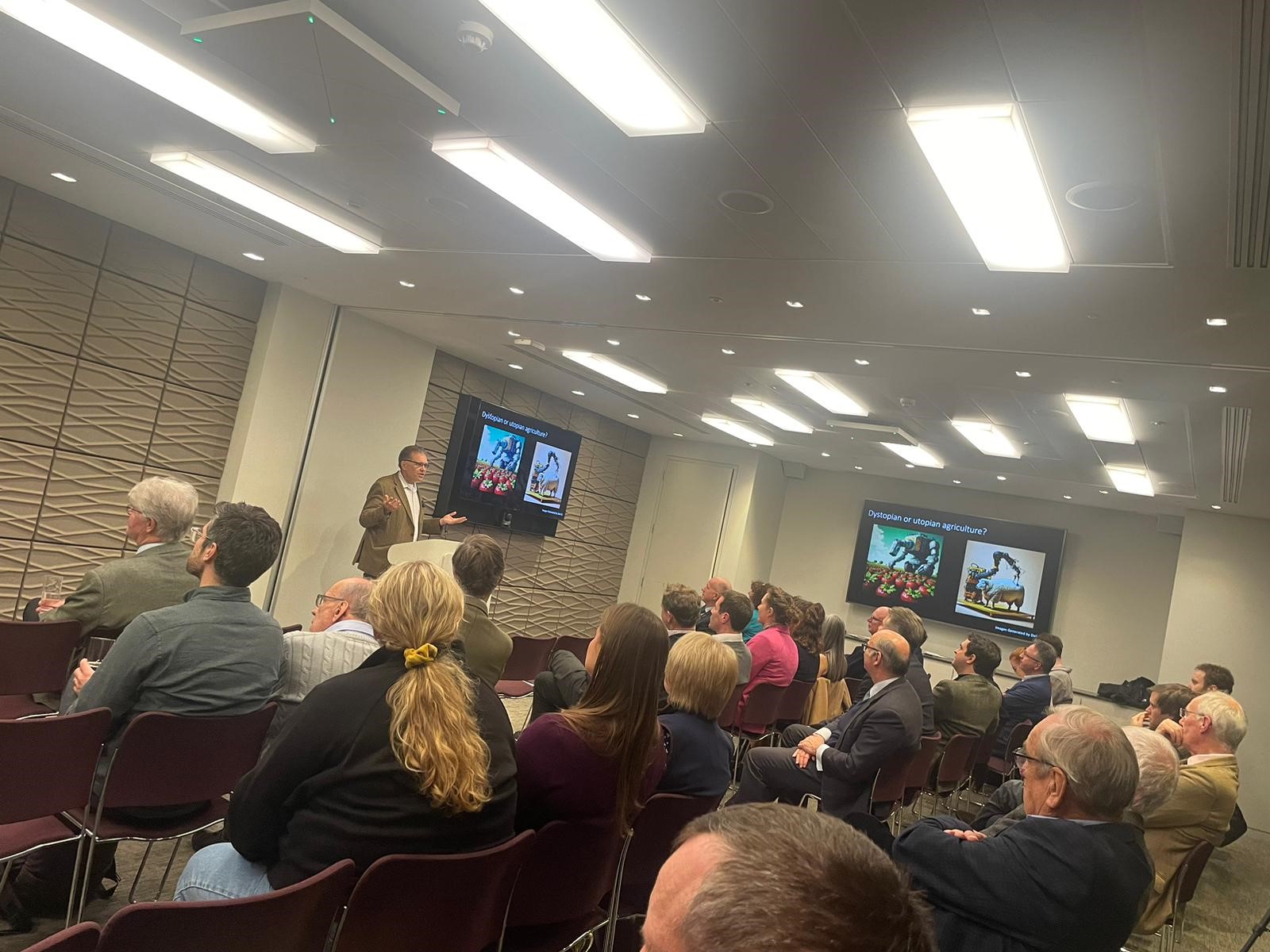
Where can artificial intelligence and robotics help in agriculture now? And how will this change in the next three to five years?
Speaking at the RASE New Year Lectures, Professor Simon Pearson from the Lincoln Institute for Agri-Food Technology, University of Lincoln, delivered a lecture on the development of robotics and AI to meet the needs of agriculture.
During his talk, Simon spoke about how shortage of labour is an issue in the UK agricultural industry, especially in horticulture, and the opportunities and limitations associated with AI and robotic solutions. He also covered what the technologies can already do in agriculture, and shared insight into what’s to come.
Labour challenges, robotics and AI
Before Brexit, there were 63,000 migrant workers in the UK harvesting fruit and vegetables each year. Now, just 45,000 migrant workers can come, with a restriction of six months each. However, Simon highlighted that labour is not just a UK issue, with the agricultural industries in Japan, China and California also experiencing shortages of workers to pick produce.
AI and robotics can be used to pick fruit and vegetables, however fruit pickers are highly skilled and robots are not yet able to achieve the same rate of picking as humans.
During the lecture, Simon shared that in 2023, George Eustice wrote an article titled ‘Artificial intelligence should make us rethink our skilled migration policy’. This delved into how skills can be both cognitive and dexterous, and dexterous skills are much harder to replace with robotics than cognitive skills. Society tends to place higher value on cognitive skills, while portraying seasonal workers as ‘low skilled’ workers, but in reality they are highly skilled and very much needed.
What AI and robotics technology already exists for agriculture?
As mentioned, robotics and AI technology already exists for harvesting, but not does not yet match the capabilities of skilled human pickers. Dogtooth produces picking robots, with more 70 now operating across UK farms.
Some other examples of use of AI and robotics in agriculture include:
- FruitCast uses AI to predict crop yields for entire sites. Rather than a farmer sampling 150 fruit to do a forecast, the FruitCast system can measure 3.5 million individual fruit a day. This allows farmers to set their prices better when they have accurate forecasting of the harvest across their entire site.
- Thorvald can control powdery mildew using UV-C treatment, moving from row-to-row within polytunnels autonomously.
- Robotic dogs have been developed by Boston Dynamics and these have been used at Lincoln to walk through and count aphids on sugar beet.
- Robotics and AI using advanced hyperspectral cameras can be used to detect the amount Rubisco, the enzyme which incorporates CO2 into plants during photosynthesis, to accurately predict the yield potential of a crop.
- They can be used for remote sensing, LIAT are working on a collaborative project, FINE, that is seeking to maximise nitrogen use efficiency on wheat. The technology can show the nitrogen use efficiency across a whole field. There’s extraordinary variability across most fields, so by looking at the optimum nitrogen rate for each pixel, it can be applied far more precisely.
What’s next?
Robotics and AI together can offer precision way beyond what a human operator can achieve. However, although it is part of the solution to enable future production of food, technology alone is not the panacea.
The development of robotics and AI so far has shown that robots can learn cognitive skills far more easily than dexterous skills, and human pickers are still superior to robotic pickers and will be for some time.
However, the technologies can be used for many different applications. They are also becoming more accessible and can now be developed by someone with some skills in data science and AI, rather than whole teams of people.
Simon explains that although we are starting to see lots of innovative companies operating in this space, they need to develop quicker and hit human picker cost parity on commercial farms before they run out of cash.
“We’re at a point where the technology hasn’t yet hit the human cost parity, so we can’t over-promise or the Home Office will say we don’t need migrant workers. But we also can’t be over-cautious, as that will put off investors and limit further development,” he said.
RASE members can watch the full video in the members’ area of the website.
